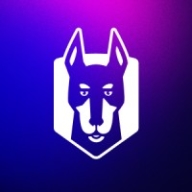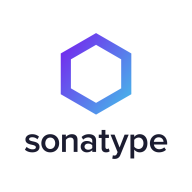

Sonatype Lifecycle and Snyk compete in software vulnerability management. Sonatype Lifecycle holds an advantage in comprehensive policy enforcement and integration capability, whereas Snyk's simplicity and developer-focused approach are noteworthy.
Features: Sonatype Lifecycle provides continuous monitoring, policy grandfathering, and effective Java vulnerability detection. Users appreciate its seamless DevOps pipeline integration. Snyk is known for its easy integration with tools like GitHub and Jenkins. It offers a well-organized vulnerability database and allows developers to address cloud-based security concerns efficiently.
Room for Improvement: Sonatype Lifecycle users express concerns about older Maven Central versions and limitations with uncommon DevOps tools. They want improved reporting formats and more intuitive interfaces. Snyk users need better notification controls and IDE support. They seek enhanced visibility of dependency lifecycles and static analysis features.
Ease of Deployment and Customer Service: Sonatype Lifecycle operates on-premises and hybrid clouds, offering dedicated success engineers. This personalized support model is valued by users. Snyk, primarily cloud-based, receives positive feedback for its deployment simplicity in public clouds, with a responsive support team aligning with modern practices.
Pricing and ROI: Sonatype Lifecycle is priced higher but justifies this with a robust feature set and security assurances, appealing to larger enterprises. Concerns arise regarding costs for new features despite the strong ROI. Snyk, although costly, offers significant value with comprehensive coverage and developer-centric features, attracting both startups and large organizations through its flexible licensing model.
We have seen cost savings and efficiency improvements as we now know what happens in what was previously a black box.
Their response time aligns with their SLA commitments.
Our long-standing association has ensured smooth communication, resulting in favorable support experiences and satisfactory issue resolution.
They are helpful when we raise any tickets.
Snyk allows for scaling across large organizations, accommodating tens of thousands of applications and over 60,000 repositories.
It handles high availability at the database level, such as synchronizing JFrog repository servers without complicated configurations.
Sonatype Lifecycle is very stable, especially in the binary repository management use case for managing binary artifacts.
It lacks the ability to select branches on its Web UI, forcing users to rely on CLI or CI/CD for that functionality.
Both Veracode and Snyk should implement this new scoring system for CVSS and AIVSS.
The inclusion of AI to remove false positives would be beneficial.
We also noticed a lack of detailed information for configuring Sonatype Lifecycle for high availability and data recovery.
After negotiations, we received a special package with a good price point.
Snyk is recognized as the cheapest option we have evaluated.
For larger numbers like our case with 1,000 user licenses, JFrog becomes much more cost-effective, roughly ten times cheaper than Sonatype.
Snyk helps detect vulnerabilities before code moves to production, allowing for integration with DevOps and providing a shift-left advantage by identifying and fixing bugs before deployment.
Our integration of Snyk into GitHub allows us to automatically scan codebases and identify issues, which has improved efficiency.
The best feature of Snyk is the integration with our ticketing system, which is Jira.
The integration into our CICD pipeline enables us to continuously monitor code changes and identify new vulnerabilities.
The most valuable feature for us is Sonatype Lifecycle's capability in identifying vulnerabilities.
| Product | Market Share (%) |
|---|---|
| Snyk | 13.1% |
| Sonatype Lifecycle | 5.3% |
| Other | 81.6% |


| Company Size | Count |
|---|---|
| Small Business | 20 |
| Midsize Enterprise | 8 |
| Large Enterprise | 21 |
| Company Size | Count |
|---|---|
| Small Business | 12 |
| Midsize Enterprise | 8 |
| Large Enterprise | 29 |
Snyk's AI Trust Platform empowers developers to innovate securely in AI-driven environments, ensuring rapid and secure software development with enhanced policy governance.
Snyk’s platform integrates AI-ready engines across the software development lifecycle, offering broad coverage with high speed and accuracy essential for fast-paced coding environments. AI-driven features include visibility, prioritization, and tailored security policies that enable proactive threat prevention and quick remediation. By focusing on LLM engineering and AI code analysis, Snyk supports secure and productive development processes. The platform's partnerships, including GenAI code assistants, enhance AI application security by addressing new threats and code velocity challenges.
What are the key features of Snyk?Snyk is implemented across industries focusing on agile development and DevSecOps, enhancing software delivery speed and security. It is widely used for continuous monitoring and adherence to security and licensing standards, especially in environments relying on Docker image security and CI/CD pipeline integration.
Sonatype Lifecycle is an open-source security and dependency management software that uses only one tool to automatically find open-source vulnerabilities at every stage of the System Development Life Cycle (SDLC). Users can now minimize security vulnerabilities, permitting organizations to enhance development workflow. Sonatype Lifecycle gives the user complete control over their software supply chain, allowing them to regain wasted time fighting risks in the SDLC. In addition, this software unifies the ability to define rules, actions, and policies that work best for your organizations and teams.
Sonatype Lifecycle allows users to help their teams discover threats before an attack has the chance to take place by examining a database of known vulnerabilities. With continuous monitoring at every stage of the development life cycle, Sonatype Lifecycle enables teams to build secure software. The solution allows users to utilize a complete automated solution within their existing workflows. Once a potential threat is identified, the solution’s policies will automatically rectify it.
Benefits of Open-source Security Monitoring
As cybersecurity attacks are on the rise, organizations are at constant risk for data breaches. Managing your software supply chain gets trickier as your organization grows, leaving many vulnerabilities exposed. With easily accessible source code that can be modified and shared freely, open-source monitoring gives users complete transparency. A community of professionals can inspect open-source code to ensure fewer bugs, and any open-source dependency vulnerability will be detected and fixed rapidly. Users can use open-source security monitoring to avoid attacks through automatic detection of potential threats and rectification immediately and automatically.
Reviews from Real Users
Sonatype Lifecycle software receives high praise from users for many reasons. Among them are the abilities to identify and rectify vulnerabilities at every stage of the SDLC, help with open-source governance, and minimize risk.
Michael E., senior enterprise architect at MIB Group, says "Some of the more profound features include the REST APIs. We tend to make use of those a lot. They also have a plugin for our CI/CD.”
R.S., senior architect at a insurance company, notes “Specifically features that have been good include:
• the email notifications
• the API, which has been good to work with for reporting, because we have some downstream reporting requirements
• that it's been really user-friendly to work with.”
"Its engine itself is most valuable in terms of the way it calculates and decides whether a security vulnerability exists or not. That's the most important thing. Its security is also pretty good, and its listing about the severities is also good," says Subham S., engineering tools and platform manager at BT - British Telecom.
We monitor all Software Composition Analysis (SCA) reviews to prevent fraudulent reviews and keep review quality high. We do not post reviews by company employees or direct competitors. We validate each review for authenticity via cross-reference with LinkedIn, and personal follow-up with the reviewer when necessary.